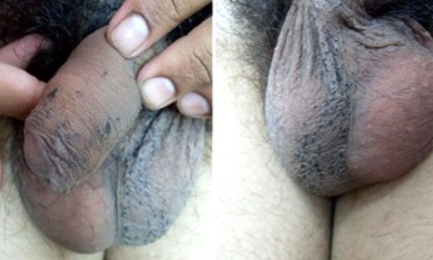Genital Papular Acantholytic Dyskeratosis is a benign chronic skin condition characterized by anogenital papules and histologic evidence of acantholysis and dyskeratosis. ICD-10 code - L11.8.
The condition is more common in women between the ages of 25 and 70, but cases have been reported in men and children.
The etiology is unknown. Some authors consider it to be a localized form of Darier disease, while others consider it to be a clinical variant of Hailey-Hailey disease. Although mutations in the ATP2C1 and ATP2A2 genes have been found in some studies, no familial cases have been described. Various hypotheses have been proposed, suggesting hormonal, viral, fungal (candidiasis), and physical (moisture and irritation) causes, but none have been scientifically proven.The disease is characterized by the appearance of small, round papules, 2-5 mm in diameter, which may be white, flesh-colored, or pink, with a smooth surface. Over time, the papules may increase in size and coalesce into plaques, sometimes on an erythematous background. In some cases, maceration, vesicles, bullae and erosions may be observed.
Typical localizations include the inguinal folds, labia majora, inner thigh surfaces, perianal area, scrotum, and penile shaft. Isolated cases of dissemination and localization to the scalp and extremities have been reported. The papules may be pruritic or painful, but are more commonly asymptomatic. The disease is chronic and may persist for years without a tendency to spontaneously resolve.
- Hailey-Hailey Disease
- Darier's Disease
- Lichen planus
- Epidermal Nevus
- Candidiasis
- Condyloma Acuminatum
- Lichen Sclerosus et Atrophicus
- Seborrheic Keratosis
- Molluscum Contagiosum
- Pemphigus vegetans
- Perianal Pseudoverrucous Papules and Nodules
- Bowenoid papulosis
- Lichen simplex chronicus
- Pearly Penile Papules
Systemic and topical corticosteroids, oral isotretinoin, and 0.1% tacrolimus cream have been used with variable success. The most significant effect has been seen with electrosurgery, cryosurgery, and CO2 laser, although recurrences have been reported in some cases.

